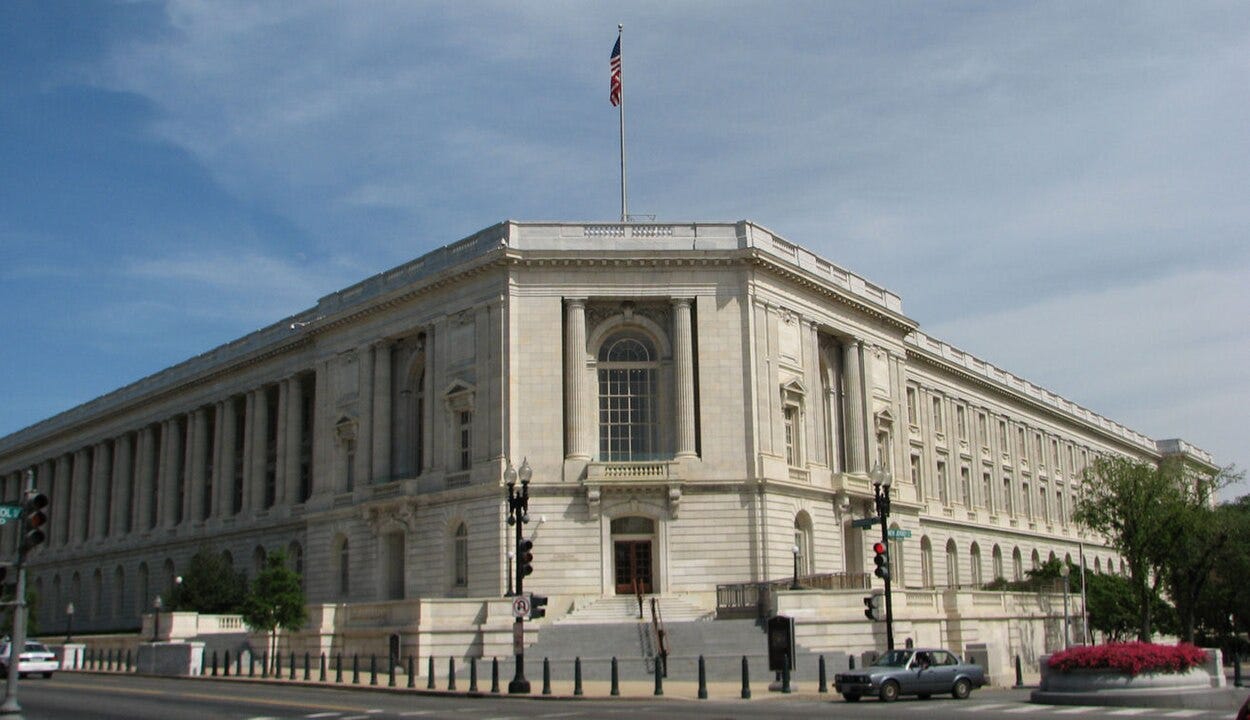CORRECTION: #41: CIVICS 101: The Legislative Branch
Q&A #41: What provisions are made for offices for Members and committees of the Congress?
The email sent out earlier this morning included the answer to Q #42, instead of Q #42. This post has now been updated with the accurate information. Thank you!
Our American Government
Our American Government is a small book published by the House of Representatives for citizens and those who seek a greater understanding of the American interpretation of democracy. It follows a question-and-answer format and covers a broad range of topics dealing with the three branches of our Government, the electoral process, and the role of political parties.
The Savvy Citizen is reproducing the 169 questions-and-answers through a series of posts called Civics 101. Each post will contain the Q&A as well as some additional commentary to add historical context, fun facts, or anything we believe will add to our collective understanding of these topics.
Think of it as your adult Civics class but without the test!
Let’s keep at it.
SECTION: The Legislative Branch: The Congress
Members, Offices, and Staff
Q&A #41: What provisions are made for offices for Members and committees of the Congress?
The Capitol Hill office complex includes offices for House and Senate leaders and officers and for certain committees in the Capitol building itself, plus five House office buildings and three Senate office buildings, plus additional rented space in commercial office buildings near Union Station, north of the Capitol.
The three main House office buildings are located on Independence Avenue, south of the Capitol. Proceeding from east to west, the three buildings are:
the Cannon House Office Building, completed in 1908;
the Longworth House Office Building, completed in 1933; and
the Rayburn House Office Building, completed in 1965.
The buildings are named for the Speakers of the House at the time the construction of the buildings was authorized. In these buildings are located the personal offices of each Member of the House, as well as the offices of House standing committees. Two additional buildings were purchased in 1957 and 1975 for use by the House for additional office space.
The first building, on C Street behind the Cannon Office Building, was renamed the Thomas P. O’Neill House Office Building in 1990 and demolished in 2002. In addition to space for House committee and subcommittee staff, the building is now also the site of the House Page School Dormitory.
The second building, on D Street SW, was renamed in 1990 the Gerald R. Ford House Office Building. Before becoming Vice President and President, Mr. Ford was House Republican Leader from 1965–73. He is the first person not to have been Speaker to have a House office building named after him.
The Senate office buildings are located on Constitution Avenue, northeast of the Capitol. The buildings were completed in 1909, 1958, and 1982, and are named in honor of influential 20th century Senators: Richard B. Russell (D, GA), Everett M. Dirksen (R, IL), and Philip A. Hart (D, MI), respectively. In addition to office space in Washington, DC, Representatives and Senators are entitled to rent office space in their districts or States.
My Thoughts
The image above is of the Cannon House Office Building and is the oldest congressional office building and is in the Beaux Arts Style of architecture. You can read more about this building on the webpage for the Architect of the Capitol website here.
—
Back next time with Q&A #42: What organizations are included in the legislative branch?
Meanwhile, don’t forget that we’re organizing the post links on a single page available here.
xo,
Kelley for the Savvy Citizen Team
January 17, 2025




